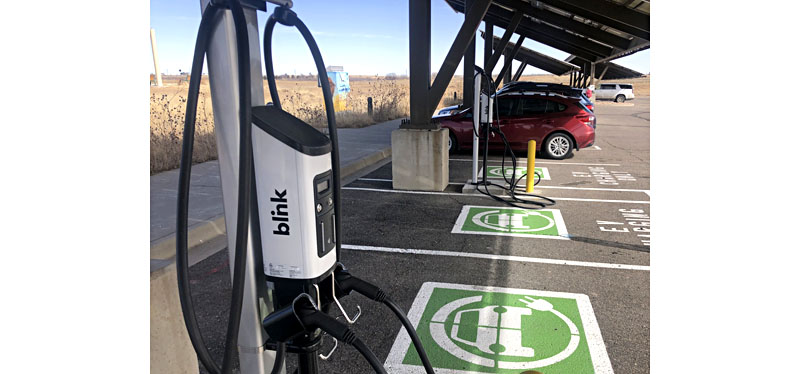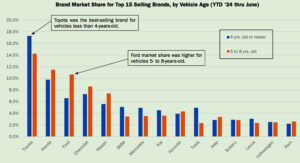The value of EVs in the U.S. fell by nearly 30%, 10 times the rate of ICE vehicles’ depreciation
Fort Wayne, Ind.—The recent depreciation of electric vehicles is ballooning their cost of ownership compared to Internal Combustion Engine (ICE) cars and light trucks. The impact of EVs on the aftermarket will be greatly influenced by how this development plays out over the next several years, according to the latest Lang Aftermarket iReport.
“Most EVs have plunged in value over the past 12 months, increasing the cost of ownership and threatening their sales in the new and used auto markets,” states the analysis. “This could have significant consequences for the proliferation of EVs on the road and their impact on the aftermarket for years.”
The following are key takeaways from the report.
Escalating Cost of EV Ownership
EVs have been touted as less expensive to own than ICE vehicles, particularly in terms of fuel and maintenance.
However, for most vehicles the most significant cost of ownership is not fuel or maintenance, but depreciation: the continuing loss of a vehicle’s value over its life on the road. EVs have recently lost value at a much faster pace than most comparable ICE models.
EV Depreciation Explodes
In the first quarter of 2024, the value of EVs in the U.S. fell by nearly 30% compared to the previous year. This was about 10 times the rate of ICE vehicles’ depreciation, and there are indications that the high rate of EV depreciation could continue for an extended time.
Causes of EV Depreciation
Lang outlines several factors have fueled the drop in EV values.
• Many dealers are slashing new EV prices to clear their lots of bloated inventories resulting from slowing consumer demand for EVs amid an increasing supply. Every dollar reduction in the cost of new EVs has a rippling effect on the value of EVs in operation, driving up their rate of depreciation.
• The longer EVs remain on the road, the more they suffer “technology depreciation” because they possess outdated and inferior technology (reflected in range, charging capacity, etc.) compared to newer models.
• Some of the issues EVs have with range, operating issues, charging times, high insurance costs, and other factors are reducing their appeal in the used-vehicle market, cutting the prices used-market buyers will pay for them compared to ICE models.
• Until recently, some EV models had experienced lower-than-normal depreciation owing largely to their scarcity in the used market. Now, with the increase in new EV supply and lowered new prices, this bubble has burst, and the depreciation of EVs has escalated.
Consequences for New Vehicle Leasing
Leasing represents over three-quarters of the new EV market in the U.S. Their depreciation has affected the EV leasing market, since the anticipated value of a vehicle at the end of its lease (which has been undercut by depreciation) is a major factor determining monthly lease payments.
In fact, the value of some EV models has deteriorated so rapidly that automakers have had to pay leasing companies (and their underwriters) significant amounts to offset the unforeseen decreasing values of leased vehicles. This will raise the cost of leasing EVs, creating headwinds for the growth of the new EV market.
Consequences for the Used Vehicle Market
Electric vehicles’ depreciation would seem to make them bargains to used buyers. Still, as Lang notes, the danger of further depreciation and the various operational and charging factors that have fed the depreciation spiral will probably more than offset the appeal of reduced EV prices in the eyes of used-market buyers.
Aftermarket Consequences
The rapid depreciation of EVs will impact the aftermarket in several ways.
• High depreciation will provide a headwind for EV demand in the new vehicle market, which could lead to further price cuts, feeding more depreciation. This will slow EVs in expanding their share of vehicles in operation (VIO) and reduce their impact on the aftermarket.
• The lower rates of depreciation of ICE vehicles, compared to EVs, could strengthen the share and volume of ICE vehicles in the new vehicle market.
• The depreciation of EVs could slow the depreciation rate of ICE vehicles, which are already depreciating less than EVs.
Lang states that those factors and other issues will likely strengthen the VIO position of ICE vehicles for years to come and contribute to their aftermarket dominance through 2030 and beyond.











Comments are closed.